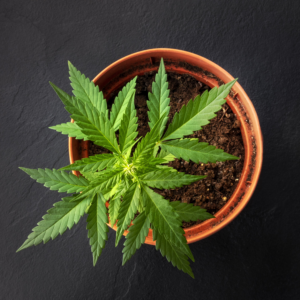For people who want to consume marijuana but don’t want to inhale it, cooking with the herb is a fantastic alternative. There are hundreds of ways to cook with cannabis, and consumers who learn to make
tasty edibles in their own kitchens will enjoy experimenting with new
recipes for years to come. Here’s an overview of what budding marijuana chefs need to know about cannabis cooking.
Cannabis Cooking 101
Cooking with cannabis is a little more complicated than taking the
entire plant and tossing it into brownie batter. In addition to
producing some unfortunate-tasting brownies nobody would want to eat,
doing so would also defeat the purpose of cooking with cannabis, as the
herb needs to be processed (via heat) in order to decarboxylate and
become psychoactive. Left to its own devices, the human body can’t
digest the THC found in raw cannabis. Because of this, most cannabis
recipes
require a form of cannabis extract, such as cannabutter or
cannabis-infused oil.
Because cannabis is fat-soluble (stored in fat), it must always be
cooked with some form of fat — like butter, an oil, or milk. This
allows the compounds within the cannabis to release into the fat,
maximizing the effects of the plant and creating a better-tasting
edible.
The Process of Decarboxylation
Decarboxylation is the process cannabis must go through before being
used for cooking, and also before being included in any form of
cannabutter or cannabis-infused oil. Because raw cannabis contains a
multitude of compounds that are not psychoactive (THCA, for example), it
must be heated in order to change the chemical structure of the herb and
activate the psychoactive compounds within it.
Decarboxylation is a simple process that can easily be done at home.
Most consumers choose to decarboxylate their cannabis by laying it out
on a lined cookie sheet and baking it at low temperatures for a long
period of time. At the end of the baking period, the cannabis becomes
crumbly and dry. At this point, it is ground in a food processor and can
be included in a variety of different extractions.
While decarboxylation may seem like an added step in the journey toward
homemade cannabis cuisine, it’s something consumers who want to cook
with cannabis must do in order to ensure a quality product.
Extracting Cannabis
Cannabis must always be processed with heat before cooking, and there
are several methods of doing so. The two most popular methods of
extracting cannabis at home are by making cannabutter (cannabis-infused
butter) and cannabis-infused oil.
While the THC in cannabis doesn’t bind to water, it binds to fats very
well. This means processing the cannabis in the form of heated butter or
oil activates the psychoactive compounds within the plant, preserves the
terpenes
(the heat-sensitive oils and compounds within marijuana that give the
plant its taste and smell), and produces a simple, tasty, and
easy-to-use method of incorporating cannabis into a variety of meals and
dishes. Most consumers enjoy experimenting with both cannabis-infused
oil and cannabutter, each offering ease of use and versatility.
Cannabutter
Cannabutter is a favorite of cannabis consumers everywhere. Easy to use
on everything from toast to homemade cookies, cannabutter is a versatile
method of extracting cannabis at home. Check out our cannabutter
recipe.
Cannabis-infused oil
Simple, tasty, versatile, and easy to use, cannabis-infused oil can
easily be used as a replacement for normal cooking oil in recipes like
brownies and other baked goods. It can also be used in things like salad
dressings and garnishes. See our recipe for marijuana-infused
oil.
Measuring Cannabis for Cooking
One of the biggest struggles home cannabis cooks face is accurately
measuring the amount of marijuana to include in a recipe. Homemade
edibles that contain too much cannabis produce an uncomfortable high,
while homemade edibles that don’t contain enough cannabis are simply
disappointing. Fortunately, it’s easy to calculate cannabis levels
correctly by using a simple guide.
As a general rule, 1 teaspoon of cannabis butter or cannabis-infused oil
contains 10 milligrams of cannabis, which is a good introductory serving
(people who have never used cannabis before will be more comfortable
around 5 milligrams per serving). If the consumer would like to alter
the serving size as they become more experienced with homemade edibles,
they should be sure to start off slowly and move up gradually.
What to Expect From Cannabis Edibles
Consumers who have never eaten marijuana before are often shocked by how
different the effects can be from smoking. In addition to producing a
different high, consuming edibles produces effects that last much longer
than they would after inhalation. Here are some general guidelines about
what to expect from homemade edibles:
- Effects of the edibles are generally felt within 30 minutes to three
hours after consumption of the edible. - Effects usually begin with relaxation and may become a “head high,”
depending upon which strain of marijuana the consumer is using. - People who do not enjoy the effects of edibles can drink citrus
fruit juice (such as orange or grapefruit) or consume a
high-CBD
product to calm the effects.
Cooking with cannabis is a fantastic way for consumers to expand their
toolbox of marijuana tricks and create some tasty, unique edibles at
home. From brownies to salad dressings and everything in between,
there’s no question that cooking with cannabis is a skill every
marijuana aficionado should master.
Some simple and popular recipes include:






